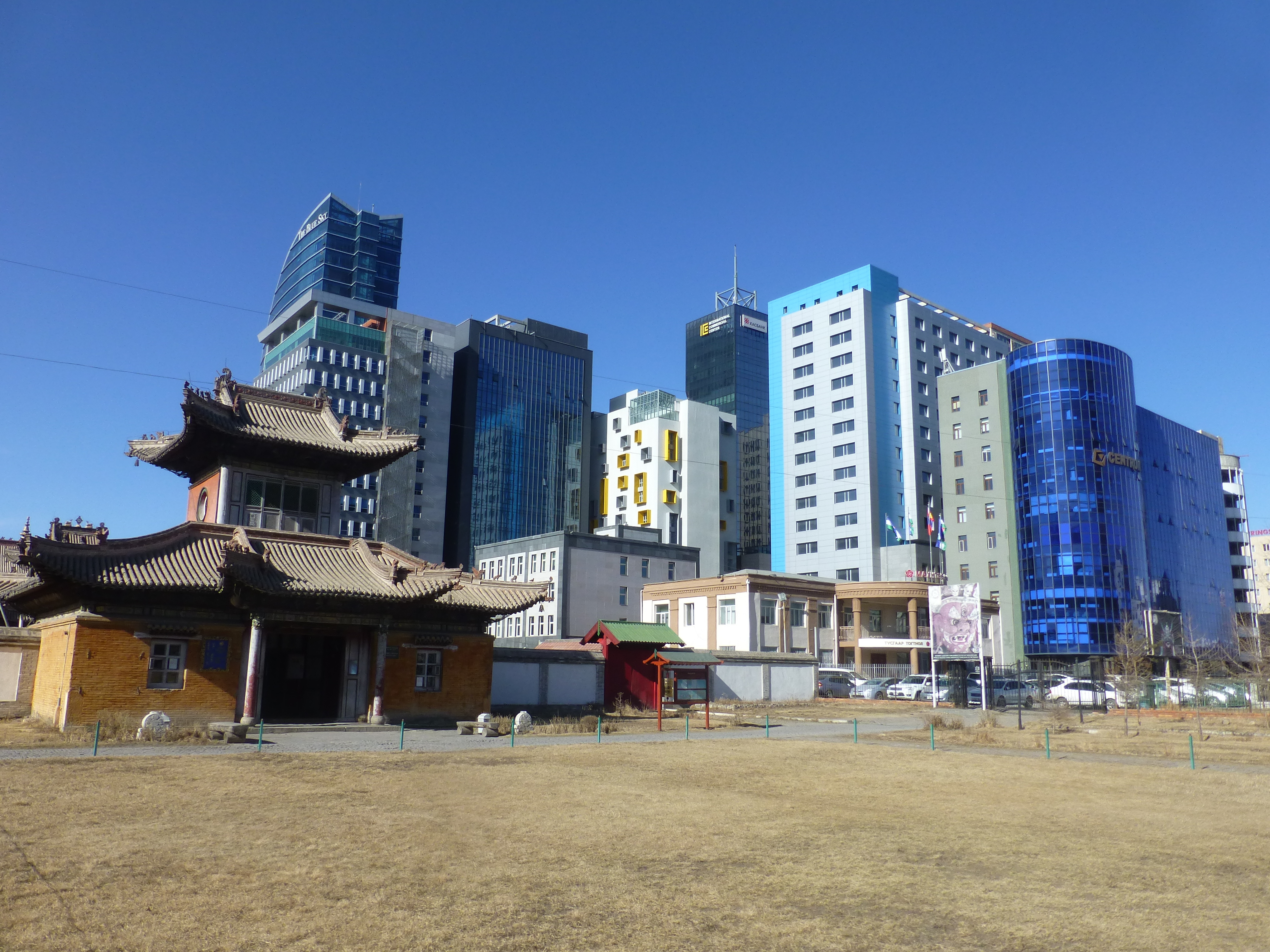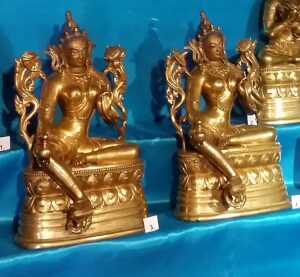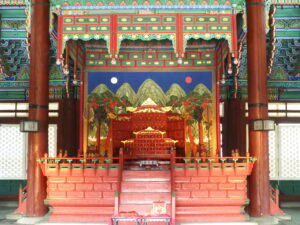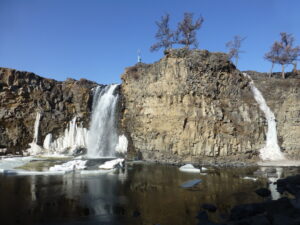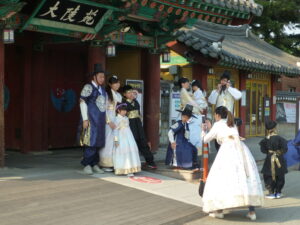In brief: In Mongolia’s capital city, known as UB, old values like the Buddhist faith have found new strength and the new is slowly transforming daily life.
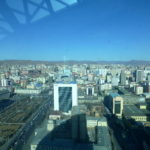
Ulaan Baatar – or UB, as the capital is known – now contains about 40% of the country’s population of 3 million. Its traffic is notoriously bad, busy from early to late, and somewhat odd as one of every three cars, per our count, is a Toyota Prius hybrid.
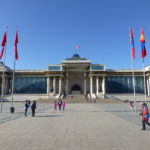
It’s not a very attractive town, in general, though it’s surrounded by angular hills and snowy mountains. Drab buildings and palatial governmental structures from the socialist period, like the Government House at the north of enormous Sukhbaatar Square, dominate the central city. Chain restaurants like KFC have grabbed prime street locations; everywhere apartment buildings sprout like mushrooms.

On UB’s outskirts especially, innumerable apartment complexes are encroaching on the national parks to the south. They will soon provide housing for the influx of Mongolians out of the countryside and foreigners needed to work the mines.
Surrounded by mountains, UB suffers some of the worst pollution of any major city, as the electric companies, along with so many of the residences and traditional gers moved into the city, all burn coal for warmth in the long, long winters.
Yet UB has its moments and some pizzazz. Sleek new high-rises like the Blue Sky hotel, facing off against Government House at the south end of Sukhbaatar Square, are supplanting many older sections. Swanky cafes and bars, authentic Korean restaurants and other cuisines compete with endless karaoke bars for entertaining. The National History museum and Fine Arts Museum Zanabazar are first class.
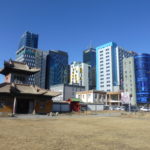
Also in the central city, several old monasteries are renewing the Buddhist faith nearly lost in the 20th century under Communist domination. Other monasteries that survived destruction, and some palaces, operate as museums. In the shadow of the Blue Sky high rise, the 19th c. Choijin Lama monastery museum displays some splendid works of religious art in colorful temples. Amid the new construction around town, it’s a bit hard to locate.
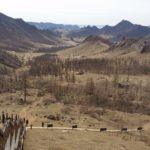
Close to the city, Mongolia has wisely preserved some beautiful landscape as national parkland. In about an hour – traffic willing – residents can reach the many hectares of Terelj National Park, with endless hillside trails and unusual rock formations everywhere. It’s so popular that ger camps and resorts with solider structures have begun to take over portions of the park, ironically under the watchful eye of an Aryabal Buddhist meditation center at the end of one valley. These places cater to an increasingly well-to-do population.
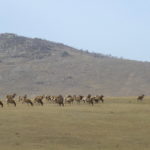
A few hours south, you can lose the crowds and go on safari in the wild sweeping landscape of Khustai. There roe deer graze in large herds; foxes, wolves and predatory birds prowl for food; marmots play hide and seek from the safety of their burrows, shelters that other animals – foxes, squirrels, snakes – often adopt as homes.
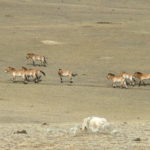
And the distinctively colored wild horses, the Przewalski breed, follow the grasses along the hillsides. The horses were once extinct, but were revived as a breed using descendants of horses removed to other locations in the early 20th century.
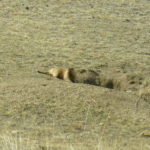
As with the wild horses, the city and people of Ulaan Baatar are doing surprisingly well – in a remarkable turnaround from their recent past or revival perhaps of their medieval glory.
Back 800 years, the Mongolians had impressive ancestors. Under Chinggis Khan (Genghis Khan) and his sons in the 13th century, Mongolia ruled the eastern world from the Middle East to deep into China and south as far as the Malay peninsula. The Chinese built the Great Wall to hold the Mongol warriors back.

Not surprisingly, Chinggis Khan is honored everywhere. The lumpy figure on the stairs of Government House is a statue of him added to honor the 800th anniversary of a country that truly started with his rule. Near the new airport soon to open east of town stands what we called Big Chinggis, a huge steel sculpture of Genghis Khan on horseback – the largest equestrian statue in the world. You can take a selfie standing on his horse’s mane, which we reached through Chinggis’ groin.
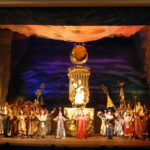
Over at the State Academic Opera and Ballet Theatre, the repertory includes an opera, “Chinggis Khan,” which we were fortunate to see. It was composed for the 800th anniversary celebration as well, tunefully combining folk songs and traditional sounds like bass throat-singing with an Andrew LLoyd Webber/Puccini vibe. We didn’t follow the story completely, for it was all in Mongolian, but Chinggis goes from lonely defeat to love and heroic triumph – in just about two hours.
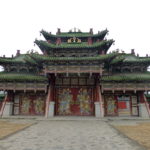
Chinggis’ empire fell apart after Kublai Khan, Chinggis’s grandson, shifted imperial control and the capital city to Beijing. The Mongols retreated to their nomadic lifestyle, and were subjected to centuries of Chinese influence and domination until 1911. Barely a decade after independence that year, the country followed Russia into socialism. Its last king, a monarch who oversaw the independence movement, was Bogd Khan, who still lived a sumptuous lifestyle. His winter and summer palace form a splendid museum now with a rich collection of art.

Mongolia was soon trapped behind the iron curtain for 70 years. The name of the capital city changed to Ulaan Baatar, or “Red Hero,” Buddhist monasteries were destroyed, and the official script became Cyrillic, not Mongolian. The most evident remembrance of Russia’s presence tops612 steps on Zaisan Hill, near all the new outlying apartment buildings. A circular mosaic from 1956 celebrates the protection of Mongolia from its enemies by the Soviet armies.
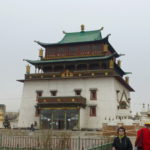
With the Soviet collapse in 1990, Mongolia became an independent democracy, one that proudly celebrated its nomadic heritage, its former power and its resilience in the face of economic troubles and feisty neighbors. With its few remaining temples, the country revived the old Tibetan school of Buddhism.
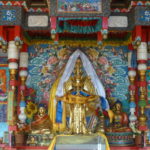
One of these, in the north of town, served as a Russian storehouse and pistol range, but now includes many colleges to teach the disciplines of Buddhist learning. Inside the main temple, a three-story tall Buddha statue rises to the ceiling, a replacement for the stolen original that was somehow lost in Russia.
From being one of the poorest countries in the early 1990s, its per capita GDP has increased 40-fold in 25 years, particularly due to mining of natural resources like copper, gold and coal. Meanwhile, the old values have found new strength in UB and the new is slowly transforming the city.
(Also, for more pictures from Mongolia, CLICK HERE to view the slideshow at the end of the itinerary page.)


